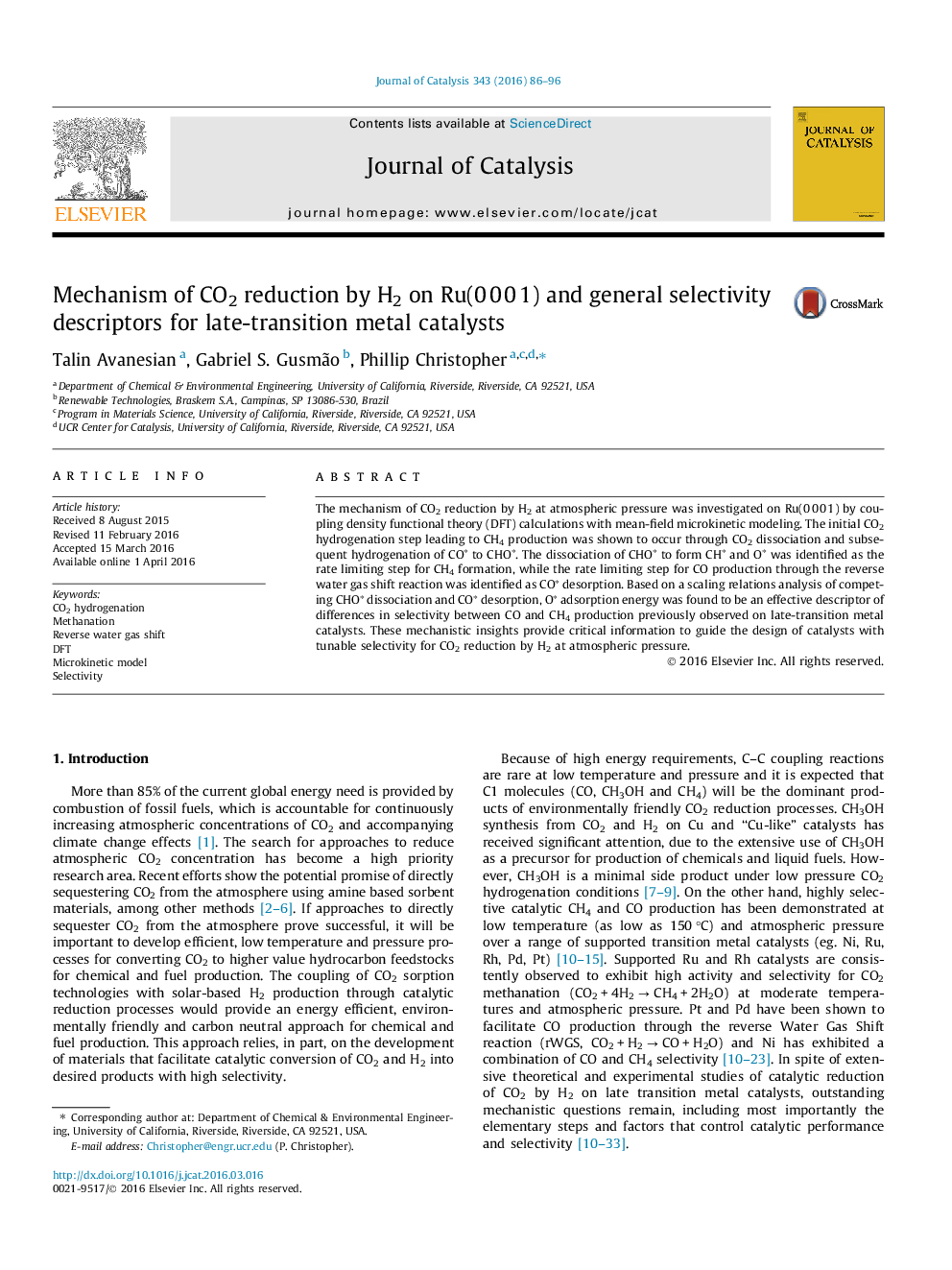| کد مقاله | کد نشریه | سال انتشار | مقاله انگلیسی | نسخه تمام متن |
|---|---|---|---|---|
| 6455956 | 1419766 | 2016 | 11 صفحه PDF | دانلود رایگان |

• CO2 reduction by H2 on Ru studied with DFT calculations and microkinetic modeling.
• CO∗ is common intermediate for competing CH4 and CO production pathways.
• CHO* identified as initial hydrogenated intermediate leading to CH4 production.
• Rate limiting steps for CO and CH4 production are CO* desorption and CHO* dissociation.
• O∗ adsorption energy is an effective descriptor of selectivity between CO and CH4.
The mechanism of CO2 reduction by H2 at atmospheric pressure was investigated on Ru(0 0 0 1) by coupling density functional theory (DFT) calculations with mean-field microkinetic modeling. The initial CO2 hydrogenation step leading to CH4 production was shown to occur through CO2 dissociation and subsequent hydrogenation of CO∗ to CHO∗. The dissociation of CHO∗ to form CH∗ and O∗ was identified as the rate limiting step for CH4 formation, while the rate limiting step for CO production through the reverse water gas shift reaction was identified as CO∗ desorption. Based on a scaling relations analysis of competing CHO∗ dissociation and CO∗ desorption, O∗ adsorption energy was found to be an effective descriptor of differences in selectivity between CO and CH4 production previously observed on late-transition metal catalysts. These mechanistic insights provide critical information to guide the design of catalysts with tunable selectivity for CO2 reduction by H2 at atmospheric pressure.
Figure optionsDownload high-quality image (133 K)Download as PowerPoint slide
Journal: Journal of Catalysis - Volume 343, November 2016, Pages 86–96